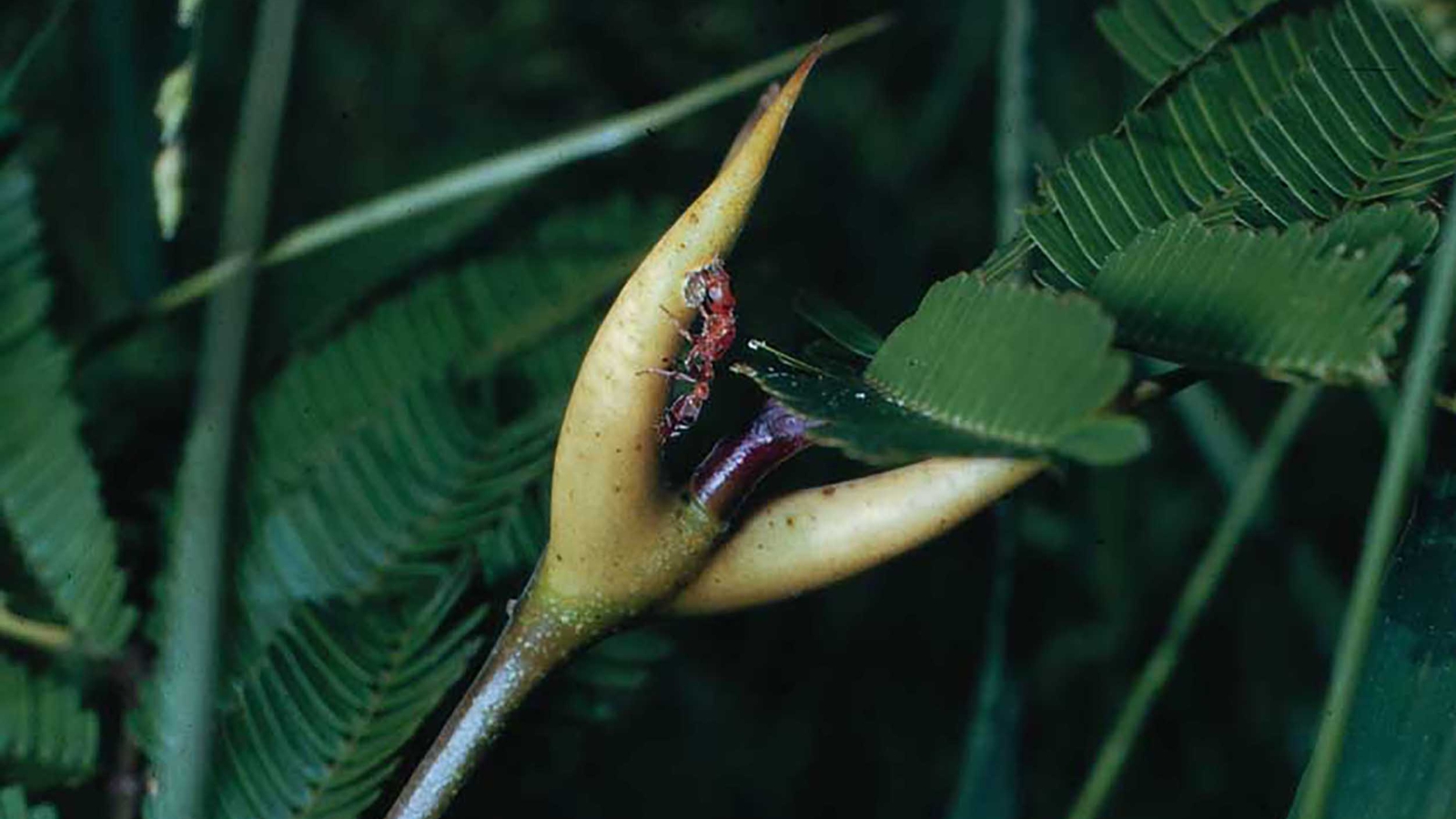The Mutualistic Relationship Between Ants and Acacias
Scott Poethig of Biology and Aaron Leichty, GR’18, examine the factors that govern the development of the acacia’s ant-sustaining traits.

A founding queen acacia-ant cuts her first entrance hole into the swollen thorn in which she will start her colony, the first thorn made by this young seedling ant-acacia in Veracruz, Mexico, 1962. (Image: Dan Janzen)
During his doctoral studies in the 1960s, Dan Janzen, now Thomas G. and Louise E. DiMaura Term Chair in the Department of Biology, re-described what has become a classic example of biological mutualism: the obligate relationship between acacia-ants and their host acacia trees. The acacia trees produce specialized structures to shelter and feed the ant colony, and the ants, in turn, defend the tree against herbivores.
In a recent study in Proceedings of the National Academy of Sciences, colleagues of Janzen’s in the biology department uncover a genetic mechanism that programs the plant side of the ant-acacia relationship. Scott Poethig, the John H. and Margaret B. Fassitt Professor of Biology, and Aaron Leichty, GR’18, showed that these species of acacia develop the traits necessary to feed the ant colony—hollow swollen thorns to house them, and nectaries and nutrient-rich leaflet tips called Beltian bodies to feed them—as part of an age-dependent phenomenon in plant development.
“There is a cost associated with making these traits,” says Poethig, senior author on the report, “but the plant needs them, otherwise it’s a goner. So there’s a tradeoff happening. And what we found is that these traits seem to have evolved on the back of a preexisting pathway that governs a developmental transition in plants.”
Leichty, now a postdoctoral researcher at the University of California, Davis, says, “When we dug into the literature, we found that a lot of plant defense strategies are age-dependent. It’s counterintuitive because you think the young plants would want to start making these structures right away so they wouldn’t get eaten, but our findings as well as profound logic suggest there are biological constraints on making them.”
To study the traits in the context of plant development, Poethig and Leichty gathered acacia seeds from online sellers in Belize and from Janzen himself. They observed what Janzen had seen in the wild a half-century before.
“Sure enough, the traits appear, but not right away,” Leichty says.
After obtaining the first genome sequence of a Vachellia species, the researchers looked specifically at certain microRNAs —short, non-coding sections of the genome—miR156 and miR157, which they had previously found to be associated with controlling the developmental timing of traits in other plant species.
As the swollen thorn and other ant- attracting traits began to appear in the acacia, levels of miR156 and miR157 declined, and the levels of different protein transcription factors repressed by these microRNAs increased.
To get a sense of how the regulation of these traits may have arisen evolutionarily, the researchers explored other acacia species that do not make Beltian bodies or swollen thorns but do make nectaries on their leaves. In these species, as in the ant-acacias, miR156’s decline coincided with the appearance of the nectaries. The similarity among the acacias in this regard suggests that the existing pathway was coopted to regulate the other traits that are required for a healthy bodyguard—swollen thorns and good food—the researchers say.
To Janzen, the finding is supportive of his field discoveries, making a case for the blending of field and lab investigations.
“I watched and asked why,” says Janzen. Of Poethig and Leichty, he notes, “They watched and asked how.”



